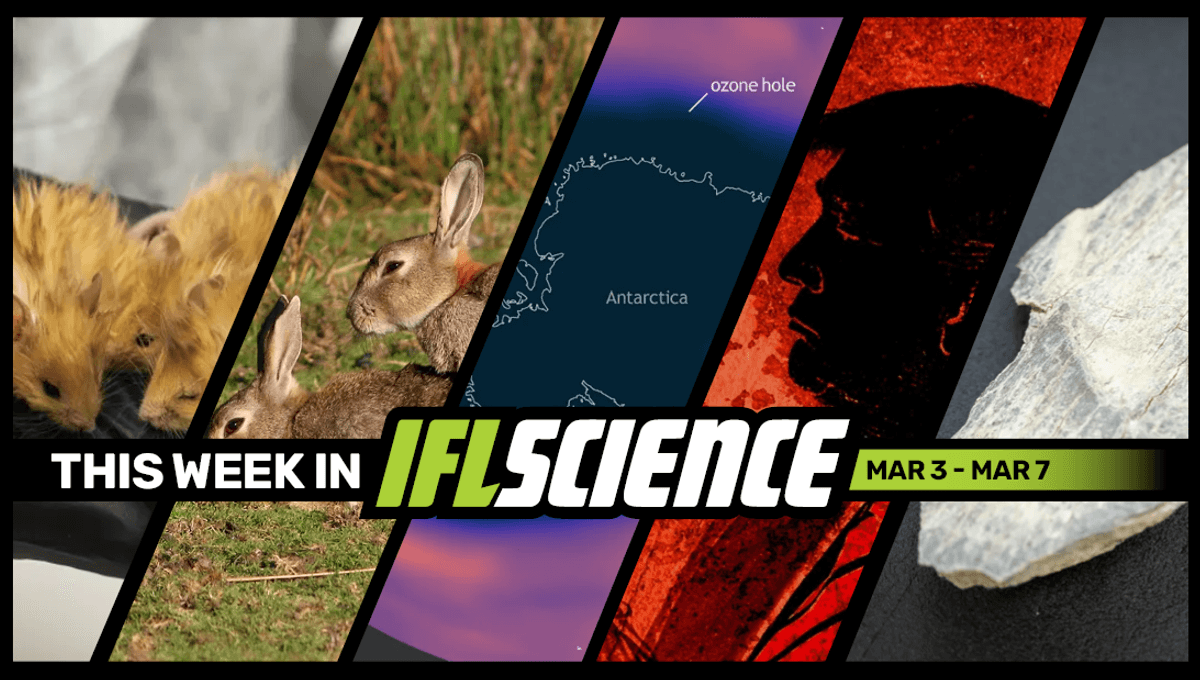
This week, in a world first, 3D-printed tissue has restored penis capabilities in pigs and rabbits, we ask why so few international organizations have responded to Trump and Musk’s attack on science, and humans may have been producing tools made from bones for more than 1 million years longer than we previously thought. Finally, we discuss which insects have the most painful sting.
Create an IFLScience account to get all the biggest science news delivered straight to your inbox every Wednesday and Saturday.
Colossal Creates “Woolly Mouse” In Step Towards De-Extincting The Mammoth By 2028
ADVERTISEMENT
As part of their ambitious goal to bring back the woolly mammoth by 2028, Colossal Biosciences has created what they’ve named the “Colossal woolly mouse”. By pinpointing gene families linked to mammoth woolliness, their team used advanced multiplexed genome engineering to target seven genes, creating mice with some of the mammoth’s core phenotype. Read the full story here
3D-Printed Tissue Restored Penis Capabilities For Pigs And Rabbits In World First
An international team of researchers from China, Japan, and the US has taken an important step in the 3D printing of organs, an intriguing but extremely challenging aspect of biomedical engineering. The organ of choice was the penis, part of which was reconstructed in the lab using a hydrogel showing realistic functionality. The artificial organ was then implanted into rabbits and pigs with penile issues, and these animals were then able to mate and reproduce within a few weeks. Read the full story here
It’s Confirmed: Antarctica’s Ozone Hole Is Recovering And On Track To Disappear Completely
After much promise and some doubt, it’s confirmed: the hole in the ozone layer over the Antarctic is recovering thanks to the global effort to reduce ozone-depleting substances. A new study led by scientists at MIT has shown with high statistical confidence ozone recovery is going strong and its healing is the direct result of reducing ozone-depleting substances, not natural weather variability. Read the full story here
Why Have So Few International Organizations Responded To Trump And Musk’s Attack On Science?
Since January, the Trump administration’s sweeping attacks on science and medicine have been unprecedented, and yet international science organizations have said little while global scientists’ anger and dismay increase. Many are asking: What’s the point of these organizations if they are not going to stand up for scientific values now that it’s needed more than ever before? Read the full story here
Humans Have Been Producing Bone Tools For Over 1 Million Years Longer Than We Thought
Tools were made from bones as well as stones in East Africa 1.5 million years ago, new research reveals. The finding adds to growing evidence of technological sophistication among early humans that far exceeds what has traditionally been acknowledged. The collection of tools was found at Olduvai Gorge – the site where Homo habilis‘s discovery reshaped the human family tree – offering insight into our ancestors’ development over millions of years. Read the full story here
TWIS is published weekly on our LinkedIn page, join us there for even more content.
Feature of the week:
The 4 Worst Insect Stings: Which Creepy Crawly Packs The Most Painful Punch?
Imagine you’re taking a delightful stroll through a wooded area, it is idyllic and peaceful… until you get a sharp pain. You look down and realize that you have just been stung by a ferocious insect that is already flying away. Already, the sting site is getting warm and beginning to throb. Being stung by a creepy crawly can be horrific and is definitely a day-destroyer. However, not all stings feel the same – so what insect causes the most painful sting? Read the full story here
More content:
Have you seen our e-magazine, CURIOUS? Issue 32 March 2025 is available now. This month we asked, “Can We Really Trust Our Memories?” – check it out for exclusive interviews, book excerpts, long reads, and more.
PLUS, the We Have Questions podcast – an audio version of our coveted CURIOUS e-magazine column – continues. In episode 6, we ask “Why Do Humans Play Games?”
Season 4 of IFLScience’s The Big Questions podcast has concluded. To revisit all of season four’s episodes, click here.
Source Link: Colossal’s “Woolly Mouse” Advances 2028 Mammoth De-Extinction Goal, Antarctica's Ozone Hole Is Recovering, And Much More This Week